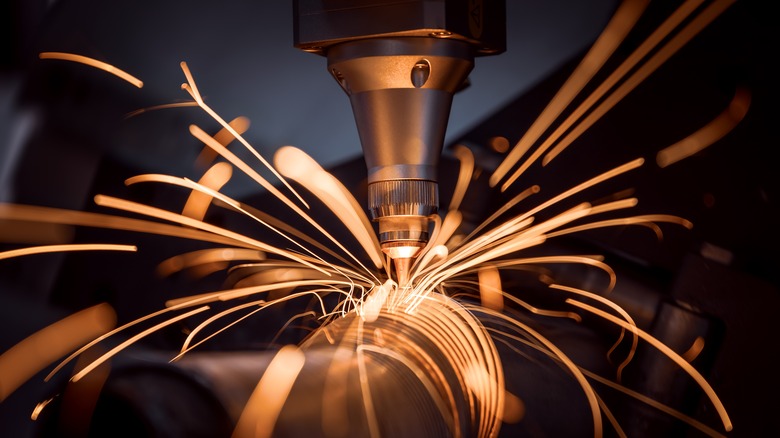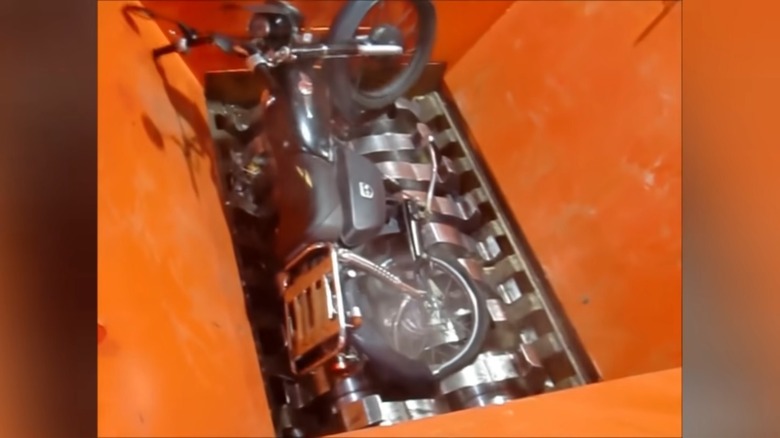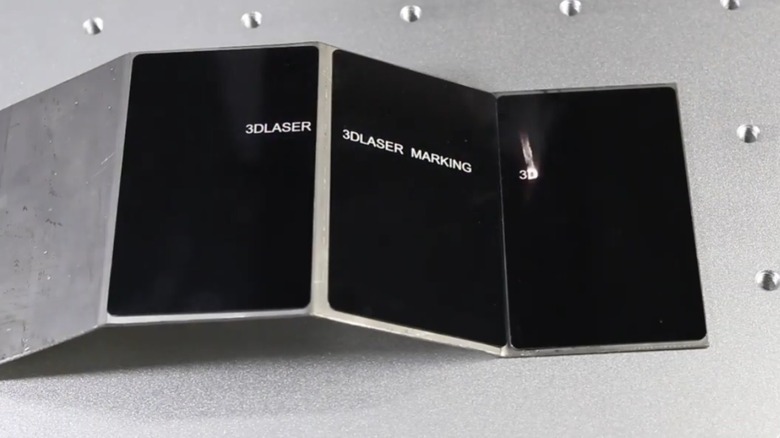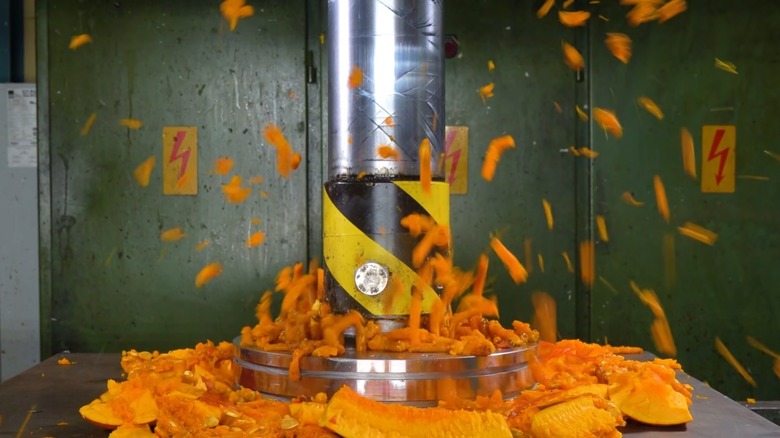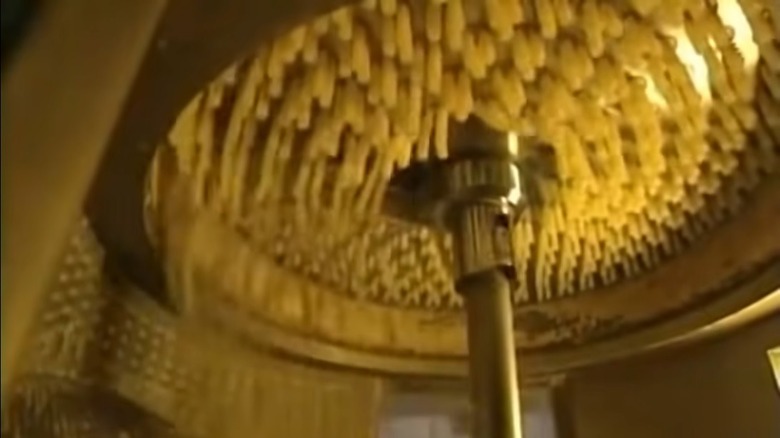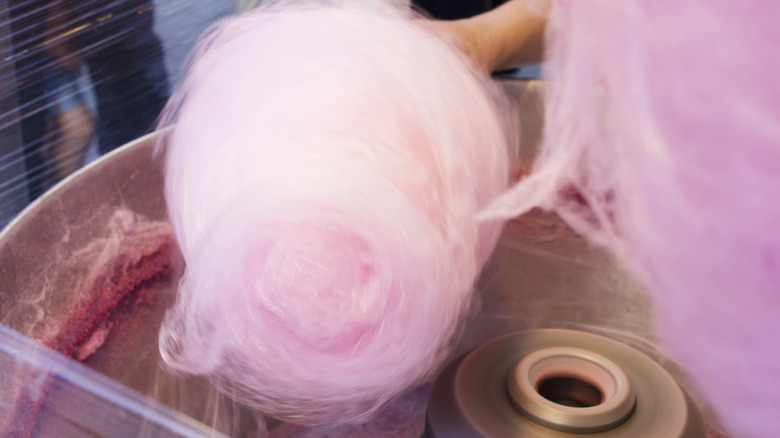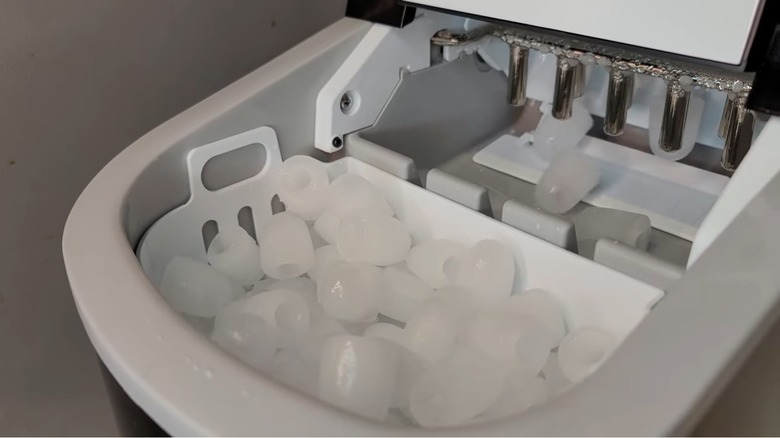The Most Satisfying Machines In Human History
For most of our planet's history, there were no such things as machines. Roughly 4 billion years sped by with countless plants and animals relying only on what nature provided for their survival and comfort. Then humans emerged and in a relatively short time, evolutionarily speaking, we began to invent things that would transform not just our lives but the whole of the world.
Today, machines outnumber the human population and it's not even close. By 2015 there were an estimated 2 billion computers in the world according to Worldometer and Statista reports that there were 15 billion cell phones in operation as of 2021. This doesn't take into consideration every other machine, large and small, that we encounter every day. Our machines have made their way to the deepest depths of the ocean and the furthest reaches of our solar system and beyond. They're everywhere.
It's striking that we spend so little time thinking about them when they make up such a significant part of our lives. Perhaps that's because many machines are almost forgettable, operating in the background, just a part of the scenery. There are others, however, which are so elegantly designed and so good at what they do that witnessing them provides a kind of satisfaction not found anywhere else.
Cookie cutter machines
Is there anything better than a good cookie? You can get them from a box or a bag and they might satisfy your sweet tooth for a while, but nothing compares to fresh baked cookies pulled warm from the oven. You might even have memories of making them as a child, rolling out the dough and then pressing them into shapes with your family's collection of cookie cutters.
Despite having used them dozens or hundreds of times throughout your life, you probably haven't spent too much time thinking about how metal cookie cutters are made, but the process might be more satisfying than the cookies themselves.
As explained by Delish, a thin piece of aluminum is placed in a circle around a shaped metal mold. At first glance, it seems almost impossible that the aluminum ring could become the shape in question, it appears way too large. Then a series of small metal appendages press in from outside in sequence, encasing the mold and the aluminum ring in a perfectly tailored suit. With each press, the diameter of the ring diminishes until it almost vanishes. The last press is the most satisfying of all, as you watch the last bit of slack disappear, leaving you with a perfectly shaped cookie cutter.
Industrial shredders
We're not sure what it says about human nature, but there's something incredibly satisfying about watching something be torn to shreds. You can get a taste of this unique joy using a paper shredder, but what if you need to dismantle something tougher than bleached wood pulp? That's where industrial shredders come in.
Industrial shredders come in various designs, each of which has a different number of rotating shafts covered in metal teeth. As explained by Industrial Quick Search, single-shaft shredders are often used for breaking down plastics while multi-shaft shredders can handle much tougher materials from old computers to tires and metal. They're often used in recycling to break complex objects down into raw materials that can be reused.
Things get really fun when multiple rollers rotate into one another, grabbing seemingly indestructible objects and tearing them to bits. As objects are dismantled, they land on a screen below the rollers which filter them based on their size. If a piece is too large, it can be passed through the shredder again and again until it's sufficiently broken up.
Knowing that these shredders are used to reduce the amount of material ending up in landfills can help you feel a little bit better about the enjoyment you get from watching things get destroyed, but mostly they're just fun to watch.
Laser engravers
People have been engraving things for more than 600 years, according to Britannica, and for most of that time, it has been a highly skilled art achieved by human hands. Initially, engraving was used to score copper plates in order to create reproducible prints. It's still used for that purpose, but we also use it to add images or wording to personalize objects like jewelry.
Engraving personal objects is more common than ever due to technological advancements that have made the process faster and more precise. Hand-driven tools have been replaced with computer-controlled lasers that mark, etch, or engrave surfaces of materials from metal to leather in seconds.
According to Earthweb, laser engraving works by removing a small portion of material with a CO2 laser, while marking changes in the conditions of the surface instead of removing pieces. Etching, likewise, doesn't remove material. Instead, it heats the surface enough that it melts but remains in place. It's best used for materials like glass or acrylic. While the specific process differs slightly, the aesthetic result is largely the same. Most importantly, you still get to watch a laser rapidly and accurately alter a material almost as if by magic.
Tattoo removing lasers
Lasers aren't only good for making new images on surfaces, but they can also be used to remove old images. Over recent years, laser tattoo removal has gained popularity among those of us who no longer enjoy the permanent artwork we've placed on our bodies.
In the past, tattoo removal was often achieved through dermabrasion, which uses a rapidly rotating surface to essentially sand away layers of skin (via Mayo Clinic). Lasers offer an alternative removal process that is potentially less traumatic.
To understand how laser tattoo removal works, we first need to understand how tattoos work. Tattoos remain in place by being sequestered in layers of the skin that don't typically move or grow. Your body generally isn't a fan of foreign objects, but ink particles are too large for your cells to easily remove, so they get permanently stuck. According to the University of Utah, laser tattoo removal works by breaking the ink down into smaller pieces so that your body can effectively get rid of it.
Fully removing a tattoo could take several sessions in order for the ink to be effectively broken down and some pigments respond more readily to laser treatment. Watching the ink almost vanish right before your eyes as the laser passes over it is incredibly satisfying to watch, even if it's not very satisfying to experience.
Automatic tree shakers
A day at the orchard can make for a fun family outing, but it's not the most efficient way to harvest fruit or nuts. If you're serious about getting your harvest as quickly and as easily as possible, you're going to need a machine.
Automatic tree shakers are driven through an orchard and parked near the target tree. The operator reaches out a robotic arm which grabs the tree around the trunk and gently shakes it until all of the fruit or nuts have broken loose (via Toronto Star). Rather than picking each piece from the tree individually, these machines can loosen hundreds or thousands of fruits or nuts in seconds.
What happens next depends on the type of food you're harvesting. In the case of nuts, they often land on the ground and are later picked up by a second machine which rapidly gathers them from the dirt. When dealing with fruit, however, you want it to have a softer landing to prevent bruising. Fruit growers use specialized tree shakers which surround the tree with a fold-out piece of fabric. As fruiting bodies fall from the tree, they're caught on the canvas before tumbling through a hole and onto a conveyer belt.
Hydraulic presses
Much like the industrial shredder, the satisfaction of a hydraulic press largely comes from watching things get destroyed. There's a whole class of online content, entire YouTube channels, which rest on the indescribable joy of watching thousands of pounds of pressure utterly crush things. Of course, that's not what hydraulic presses were designed for. Hydraulic presses are largely intended for use in manufacturing and are often used to punch out or compress materials (via Grainger) but if humanity can find a way to use technology for entertainment, we're going to do it.
There are a number of different types of hydraulic press, but they all largely work on the same principle. The press is filled with a liquid, typically oil, and the pressure inside is increased by moving the liquid around. Because pressure increases in all directions, according to Pascal's law, the increased pressure drives a cylinder toward a plate (via ScienceABC). Objects placed between the cylinder and the plate are crushed. The pressure a hydraulic press can achieve is limited largely by the strength of its materials and constituent parts. In order to avoid the system being overloaded, a pressure release valve is included to vent any excess pressure and keep the press in good working order. Too much pressure might be a concern if you're crushing cars into tiny cubes, not so much if you're smashing gummy bears for fun.
Pasta cutters
Over time, as the world has become industrialized, the need for accurately repeated tasks has increased and automation has stepped in to make that happen. Building cars, for instance, requires the accurate manufacturing of thousands of identical parts. As a result, it's helpful to have machines that can crank out the same thing over and over again.
Machines for accurately producing identical objects are useful in all sorts of industrial settings, but they've also found their way into the kitchen. How else do you think you get perfectly identical macaroni noodles every single time? Automatic pasta cutters use the same principles as other industrial machines, but instead of cutting metals or plastics, they're chopping up carbohydrates.
In factory settings, pasta is made by mixing wheat and water into a dough. The dough is then pushed through various molds depending on the shape of pasta you want to end up with. This is where things get satisfying. As the dough is extruded through the molds, a rotating blade swings through like a reaper's scythe and cuts the noodles into perfectly identical portions. With each revolution, hundreds of noodles fall into a collection tray. Industrial pasta machines can make thousands of noodles per minute (via How It's Made).
Power washers
While high pressure is good for smashing things in hydraulic presses, it's also useful for cleaning surfaces in the most satisfying way possible. Childhood chores might have been a lot more fun if we'd had access to a power washer. Although, washing dishes with thousands of pounds of pressure might not be the best decision.
Power washers are similar in philosophy to hydraulic presses but quite different in design. Instead of using oil, they takin in water from a water source like your backyard faucet and push it through an electric or gas-powered water pump (via Explain That Stuff). That pump increases the pressure. In a press, the pressure would be used to move a cylinder and any excess pressure is vented through the release valve. In the case of a power washer, the release valve is the point.
After the water is pulled in and pressurized by the pump, it's released through a high-pressure hose at high speed. The result is a stream of water carrying high kinetic energy. The stream comes out at thousands of pounds of pressure per square inch. That's enough to remove dirt and grime from just about anything. It's also enough to cause pretty serious injury if pointed in the wrong direction. Proceed with caution, or just watch pressure washing compilations on YouTube from the comfort of your couch.
Cotton candy machines
Cotton candy is a staple of county fairs, festivals, and sporting events. There's a good reason cotton candy stands are set up in such a way that you can watch the purveyor at work. Seeing candy floss spin out from seemingly nowhere and gather on the paper cone is spellbinding. It's also a fairly recent experience.
Before there were cotton candy machines, people often ate spun sugar. It works on the same principle as cotton candy but is a lot less satisfying. Spun sugar was historically made by caramelizing sugar and spinning it with forks. You'd essentially end up with a bunch of small threads of sugar in a bundle. Confectioners still use this process, or a variation of it, to make decorative sugars for desserts.
Then, in 1899, John C. Wharton developed the cotton candy machine. It basically takes the whole spun sugar process and automates it. A heating element melts sugar which is then thrown through small rotating holes (via How Stuff Works). Modern machines use floss sugar which is flavored and specifically intended for making cotton candy, but you can also use almost any hard candy. Smashing or grinding it into smaller bits will make it easier for your machine to melt the sugars and spin them into the candy floss of your dreams (via Candy Turf).
Automatic ice machines
There's nothing worse than wanting a cold drink and realizing you forgot to fill your ice trays overnight. Sure, you can fill them now, but it will be hours before they're ready and, in the meantime, you're drinking tepid water.
In the grand scheme of things, we shouldn't complain. Not very long ago, you had to pay a premium to have ice shipped to you from colder parts of the world (via Mental Floss). Automatic ice machines take the manual work out of the process and there are a number of versions built right into refrigerators. They rely on internal mechanics and a connected water line to pump out a continuous flow of ice. However, that all happens behind the scenes, making it highly convenient but not very satisfying.
If you want to watch an elegantly cool machine at work, get your hands on a countertop ice machine. They work by using a small water pump to continuously run water over metal prongs. Those prongs use refrigerant to reach freezing temperatures and slowly build an ice pellet on their surface. Then, using a heat exchanger, the surface temperature of the prong rises until the ice pellet falls off, landing in a collection tray (via Danby). Finally, a small plastic arm transfers the newly made ice into a bucket where you can scoop it into your drink.
